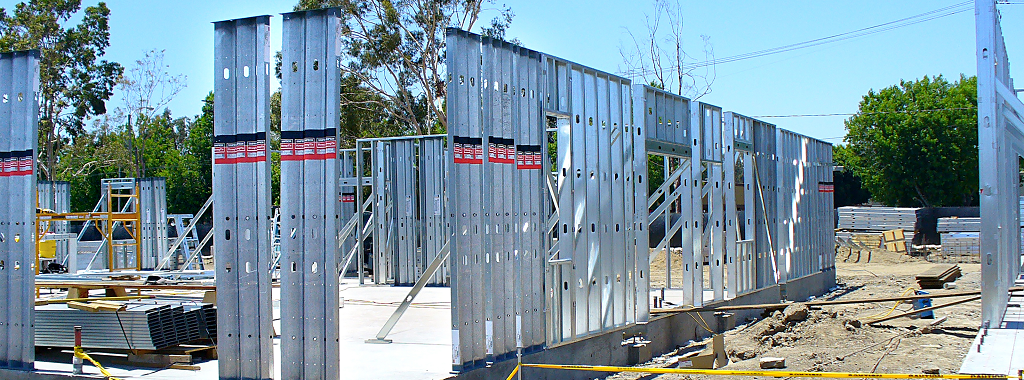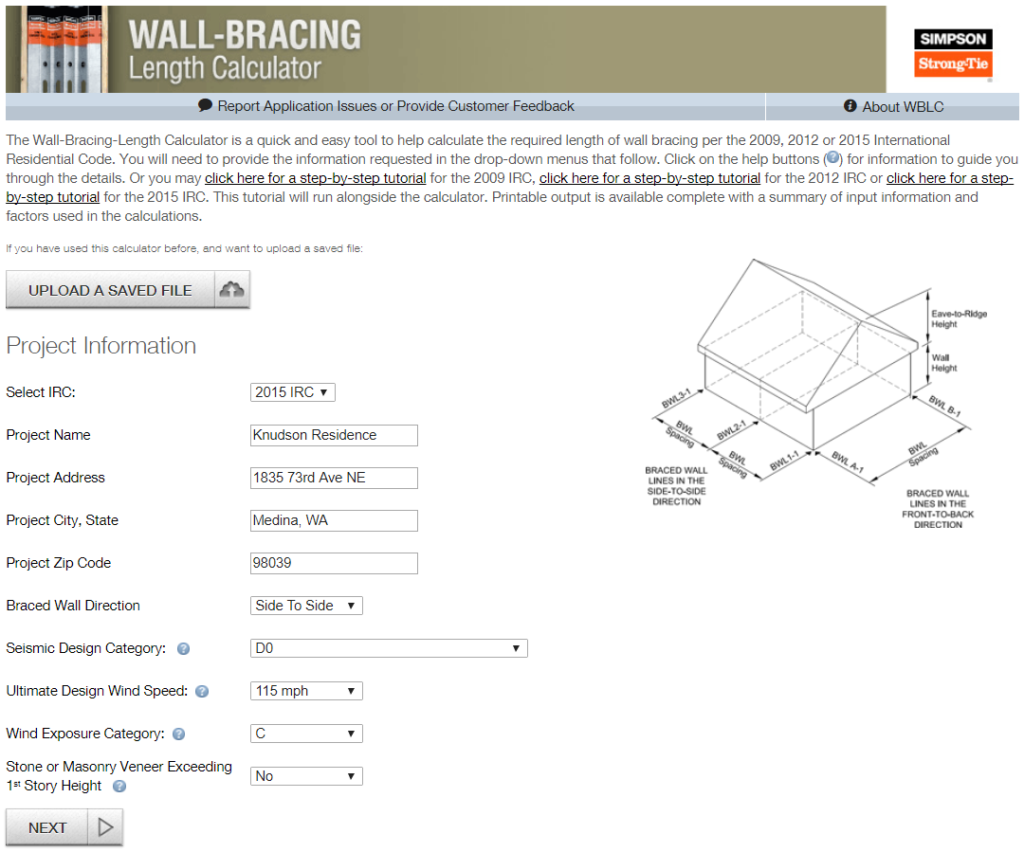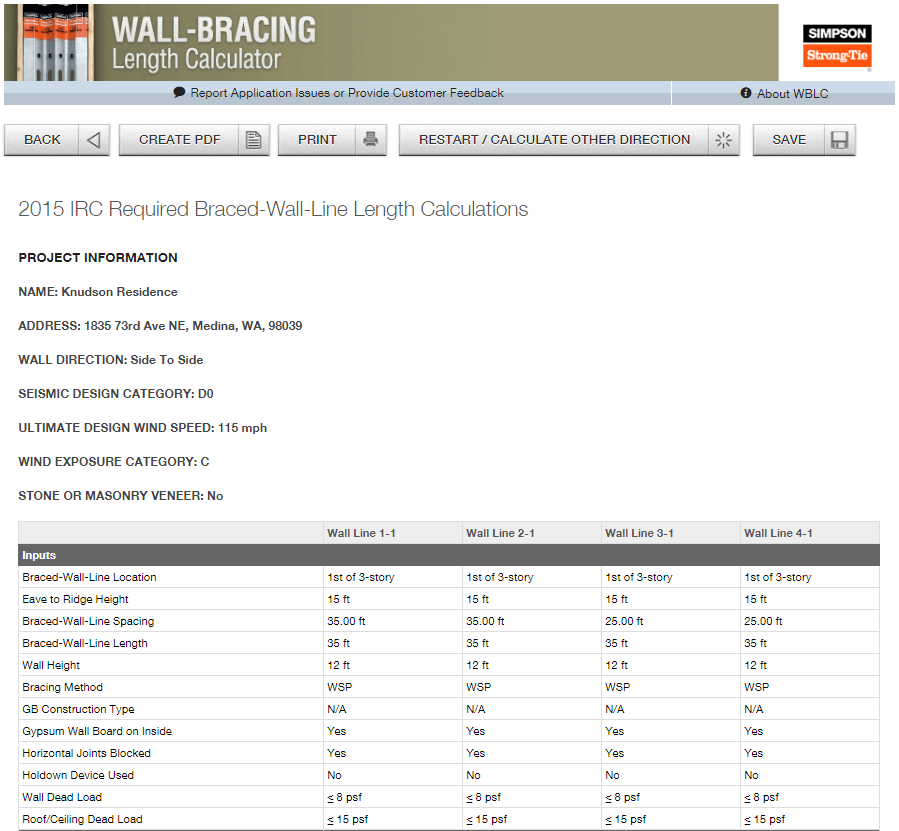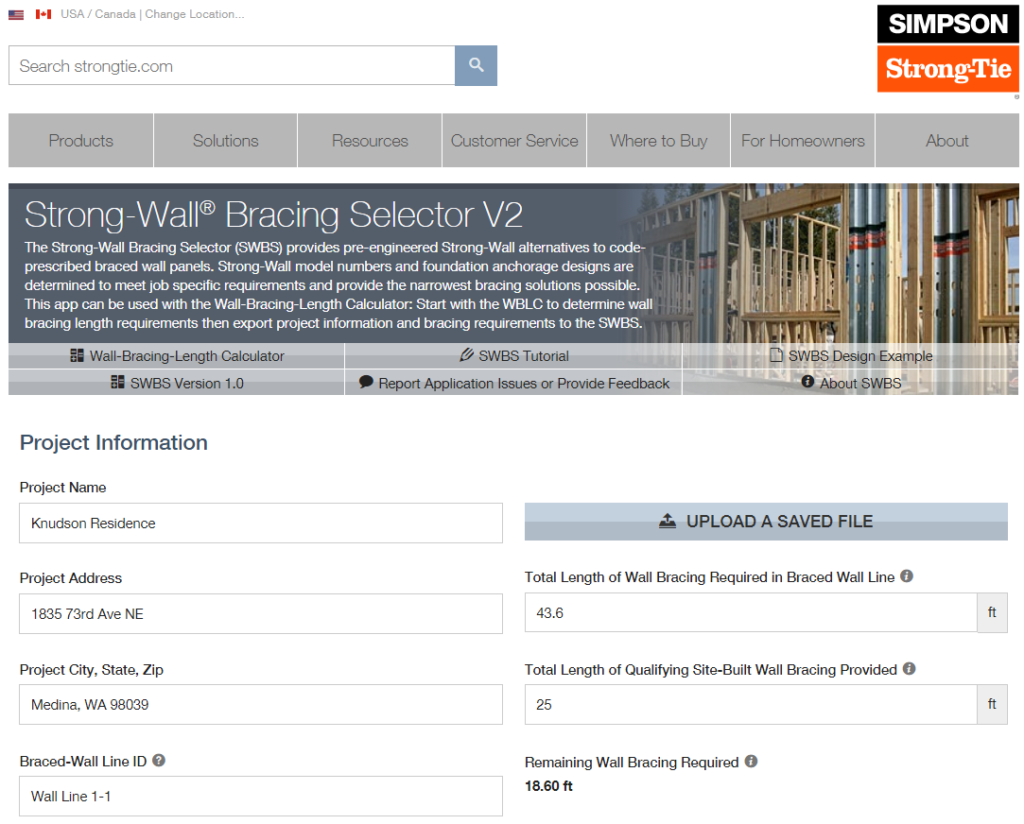It’s been said that the World Wide Web is the wave of the future. Okay, maybe this is slightly outdated news, as it’s been 25 years since Bill Gates penned his internet tidal-wave memorandum, but it’s a good lead-in to this week’s blog topic – web apps. More specifically, those apps that have been developed to address the wall-bracing requirements defined in the International Residential Code® (IRC). Designers and engineers have no doubt noticed that over the last several code cycles, the wall-bracing provisions in the IRC have become increasingly complex. To help navigate these requirements and calculate the required bracing length for a given wall line, Simpson Strong-Tie introduced the Wall-Bracing-Length Calculator (WBLC) a few years back, as discussed in an earlier blog post. I’ll also mention that the WBLC has since been updated to the 2015 IRC.
Those familiar with the wall-bracing provisions in the IRC know that there are twelve intermittent wall-bracing methods and four continuous-sheathing methods to address wall-bracing requirements. Each of these methods may be used in most applications, and, while some provide advantages over others, the code-based methods provide Designers with quite a bit of flexibility. However, there may be cases where the site-specific conditions are beyond the scope of the IRC, or there just isn’t enough available full-height wall space to accommodate the required wall-bracing length. These cases are most likely to occur at large window openings or at garage fronts.
Let’s take the following example of a house on Lake Washington – assuming the house is being designed in accordance with the IRC. Presumably, one might prefer to have unobstructed lake views, which of course means lots of large picture windows and not much room left for braced wall panels. Let’s also suppose you’ve got a brand-new Chris Craft that you’d like to protect against the weather when it’s not in the water – this means wide garage doors and, again, not much room for conventional wall bracing.
So what do we do now?
Thankfully, the International Residential Code provides some guidance. Section R301.1.3 states that when a building, or portion thereof, is outside the scope of the IRC, the element(s) may be designed in accordance with accepted engineering practice. The code goes on to state that the extent of the design shall be such that the engineered element(s) are compatible with the performance of conventional methods prescribed in the code. That creates some additional options for our tool box. We could design a site-built shearwall; however, due to aspect-ratio limitations defined in the Special Design Provisions for Wind and Seismic (SDPWS), we still may not be able to get the lake views and wide garage we want. The next option, and one we’ll focus on here, is the code-approved prefabricated Simpson Strong-Tie® Strong-Wall® shearwall.
In an earlier blog post, as previously mentioned, we introduced the Strong-Wall Bracing Selector (SWBS) and defined just how we determine equivalence to conventional bracing methods. We further described the benefit of using the selector in conjunction with the Wall-Bracing-Length Calculator (WBLC). To refresh your memory, when Designers start with the WBLC to determine required wall-bracing-lengths for up to seven parallel wall lines, they can export those bracing lengths as well as project and jobsite information directly to the SWBS with the click of a button. The SWBS will then provide a list of Strong-Wall panels that provide an equivalent bracing length, evaluate their anchorage requirements, and return a list of pre-engineered anchor solutions for a variety of foundation types.
On to the present: We just launched the Strong-Wall Bracing Selector web app version 2.0, and there are a few new features worth noting.
First, I’ll mention that all Strong-Wall solutions have been evaluated according to the 2015 I-Codes. Next, and hopefully this doesn’t come as too much of a surprise, the original wood Strong-Wall shearwall (SW) is being phased out with guaranteed availability through December 31, 2018. In light of this planned obsolescence, we have removed the SW solutions from the latest version of the bracing selector.
Here’s the good news – and this is big: We’ve now added the new Strong-Wall wood shearwall (WSW) to the app and recommend this as a replacement for the SW in all applications. In the interim, while the original wall is still available, version 1.0 of the bracing selector app may be used if an SW bracing solution is required.
Lastly, we’ve provided the Designer with a bit more flexibility and control over the Strong-Wall bracing solutions provided by the app. If you recall, version 1.0 provided a solution using the minimum possible number of Strong-Wall panels to satisfy the bracing length requirement. We’ve changed that in version 2.0; Designers may still select a solution using the minimum number of panels, but they may also select the exact number of Strong-Wall panels to satisfy their wall-bracing-length requirements. Typically, it’s desirable to address the bracing requirement with the minimum number of Strong-Wall shearwall panels possible. Sometimes, however, it may be advantageous to increase the number of panels used, in order to decrease the Strong-Wall panel width used for a solution or to reduce anchorage requirements, i.e., lesser footing dimensions and anchor embedment depths. Stated a little differently, we’re providing the option to find the right balance between the braced wall panel design and the anchorage design – i.e., the Goldilocks zone for prescriptive wall bracing.
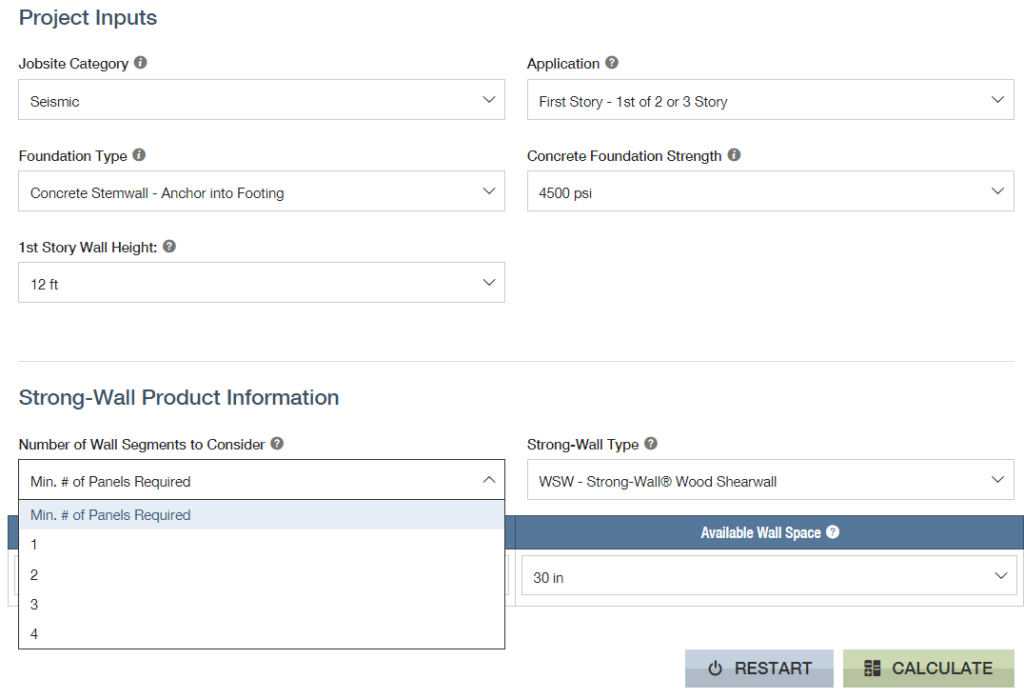

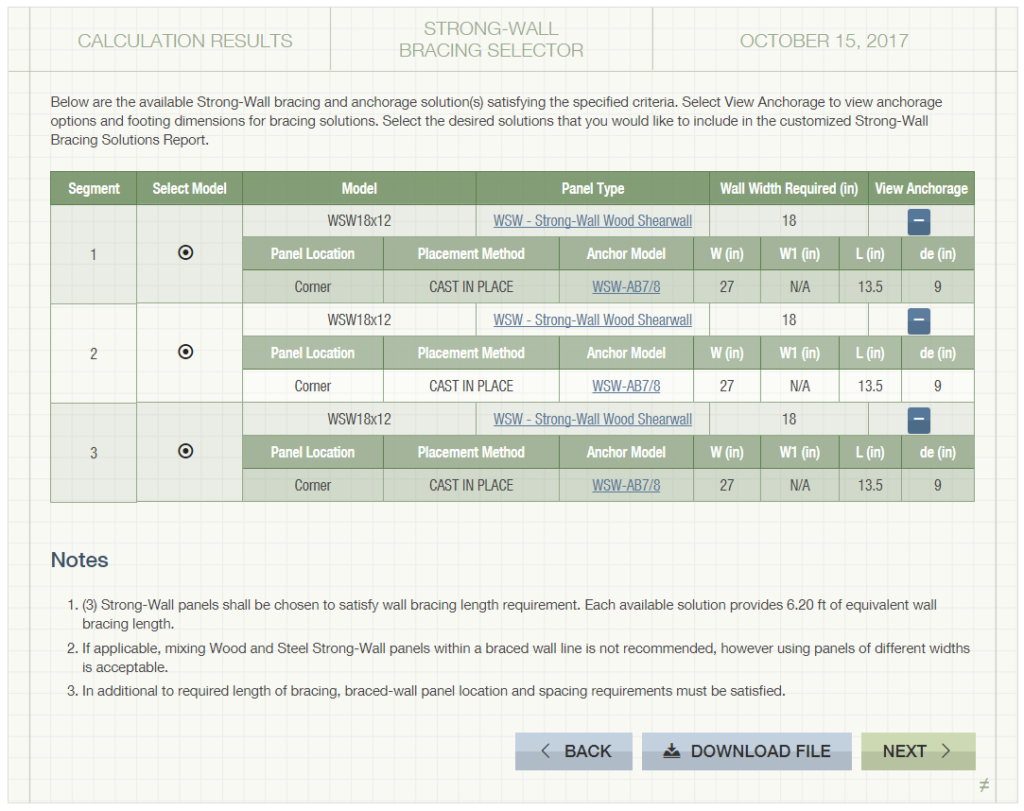 So now that we’ve reviewed just why a Designer may need to specify a Strong-Wall shearwall in prescriptive applications and how the Wall-Bracing-Length Calculator and Strong-Wall Bracing Selector web apps help to navigate this process, we’re interested to see what you think. Is there any additional functionality that you’d like to see in the future, or are these apps just right for your design needs? Let us know in the comments below.
So now that we’ve reviewed just why a Designer may need to specify a Strong-Wall shearwall in prescriptive applications and how the Wall-Bracing-Length Calculator and Strong-Wall Bracing Selector web apps help to navigate this process, we’re interested to see what you think. Is there any additional functionality that you’d like to see in the future, or are these apps just right for your design needs? Let us know in the comments below.



